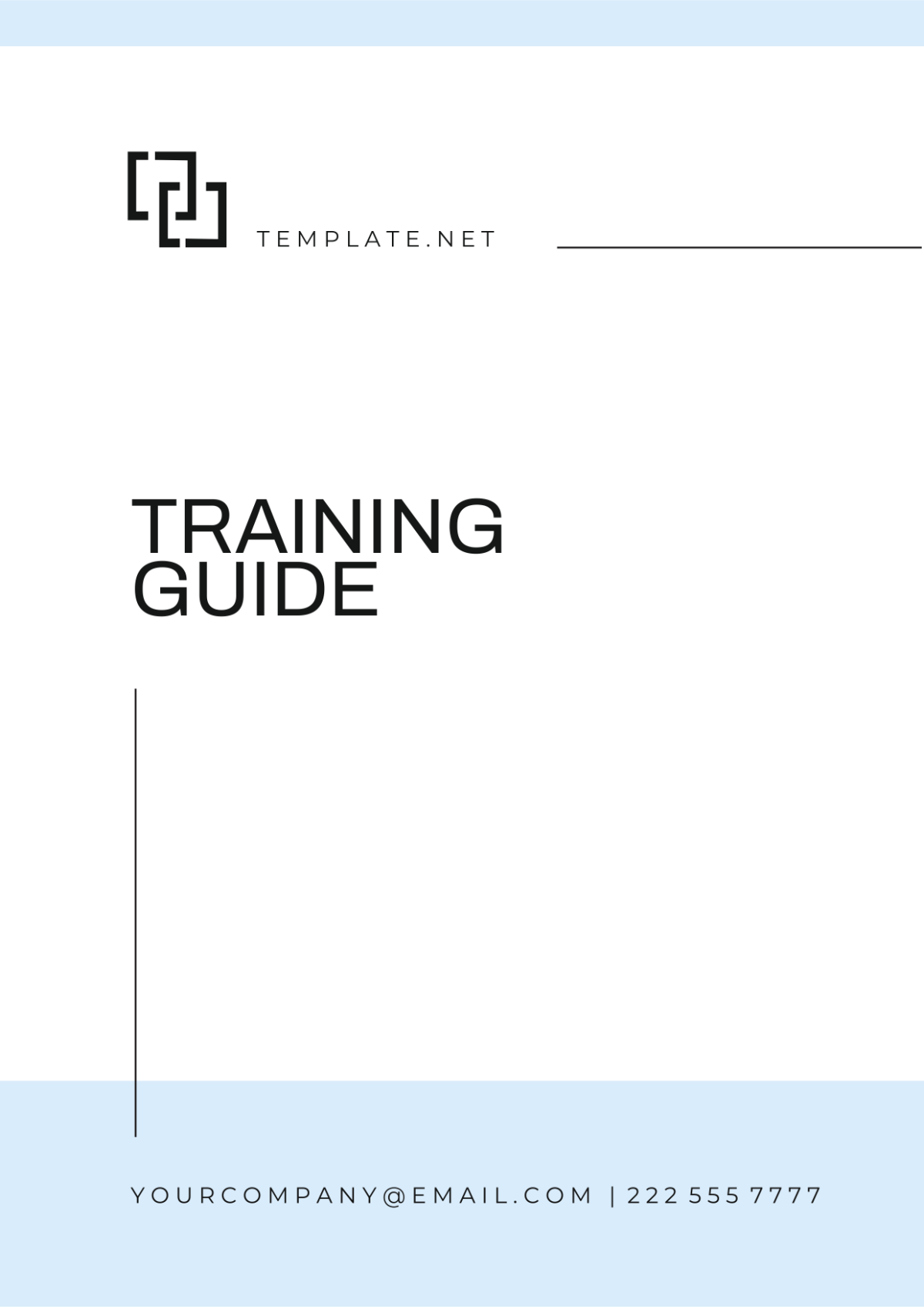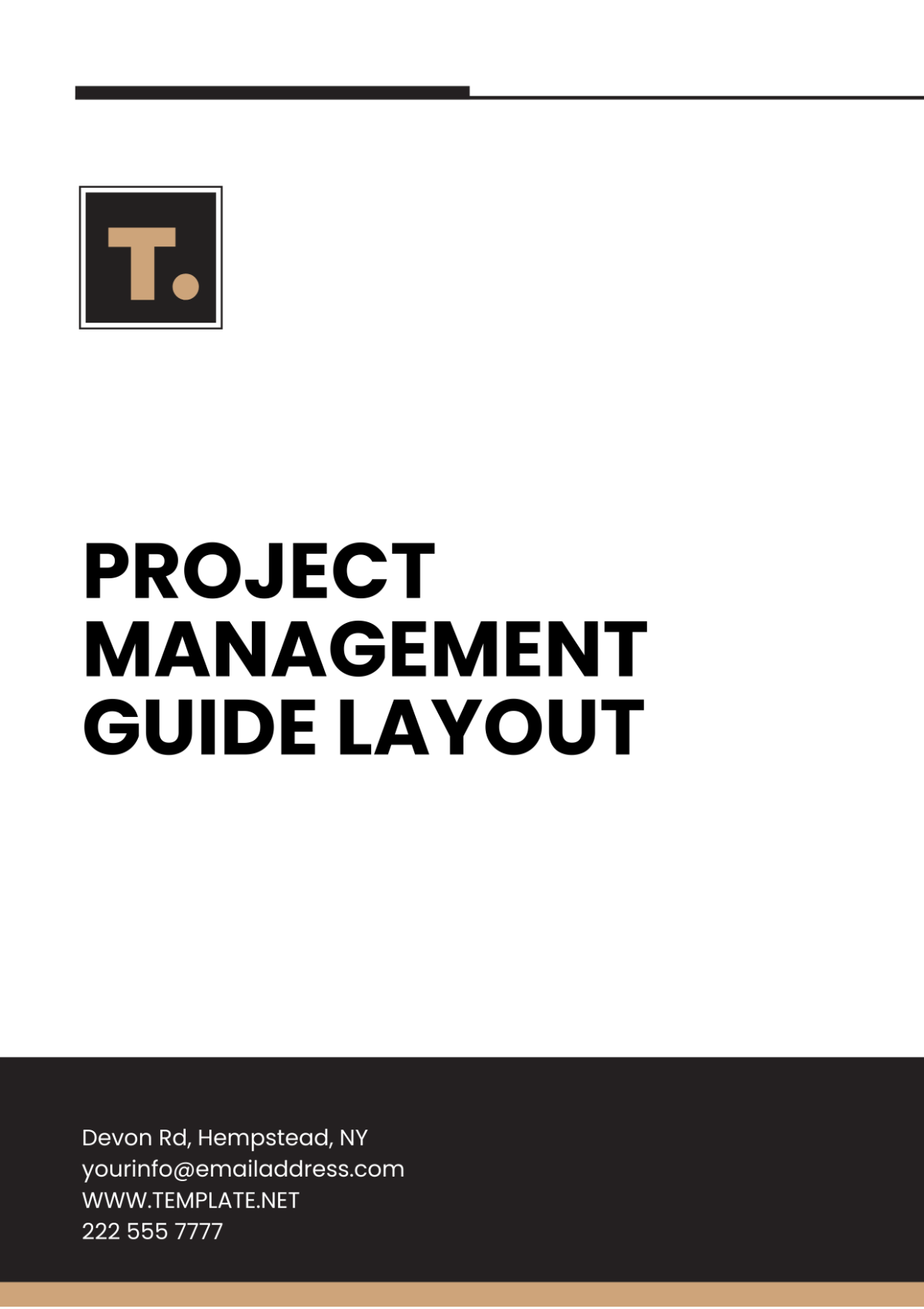School Reference Guide
I. Introduction
The School Reference Guide provides a comprehensive overview of [Your Company Name], detailing essential information, policies, procedures, and resources available to students, parents, and staff. This guide aims to foster a better understanding of the school's operations and ensure a cohesive and well-informed school community.
II. School Overview
This section provides a detailed introduction to the school's mission, vision, and core values, highlighting what makes [Your Company Name] unique. Our school is dedicated to providing an educational experience that not only meets academic standards but also fosters personal growth and community involvement. By understanding our foundational principles, stakeholders can better appreciate the distinctive qualities and commitments that define our educational environment.
A. Mission Statement
To empower students with a well-rounded education that promotes academic excellence, critical thinking, creativity, and social responsibility.
Our mission statement encapsulates our commitment to developing students who are not only knowledgeable but also capable of thinking critically and creatively. We believe in nurturing well-rounded individuals who are prepared to take on the challenges of the future with a sense of responsibility towards their community and the world at large.
Key Components of Our Mission:
Academic Excellence: We are dedicated to maintaining high standards of academic achievement. This involves rigorous curriculum development, effective teaching practices, and continuous assessment and improvement. Our goal is to ensure that every student reaches their full academic potential.
Critical Thinking: We emphasize the importance of critical thinking and problem-solving skills. Our curriculum is designed to challenge students to think deeply and critically about the world around them, encouraging them to question assumptions, analyze information, and develop well-reasoned conclusions.
Creativity: We believe that creativity is a vital skill for the 21st century. Our educational programs encourage students to explore their creative potential through the arts, sciences, and humanities. We provide opportunities for students to engage in creative projects, collaborate with peers, and express their ideas in innovative ways.
Social Responsibility: We aim to instill a sense of social responsibility in our students. This involves teaching them about the importance of civic engagement, ethical behavior, and community service. We encourage students to think about their role in society and to take action to make a positive difference in their communities and beyond.
B. Vision Statement
To cultivate an innovative, inclusive, and dynamic learning environment that empowers students to achieve their full potential.
Our vision statement reflects our aspirations for the future. It is a forward-thinking declaration of the kind of educational environment we strive to create—one that is constantly evolving to meet the needs of our students and the broader community.
Key Components of Our Vision:
Innovation: We strive to incorporate the latest educational technologies, methodologies, and pedagogical practices to ensure that our students receive a cutting-edge education. This involves continuous professional development for our teachers, investment in state-of-the-art classroom resources, and a curriculum that embraces new and emerging fields of study.
Inclusivity: We are dedicated to creating a learning environment where every student feels valued and supported. This means recognizing and celebrating diversity, providing resources and opportunities for all students, regardless of their backgrounds or abilities, and fostering a culture of respect and empathy within our school community.
Dynamic Learning Environment: We aim to create a vibrant and engaging educational experience that motivates and inspires students. This involves a curriculum that is flexible and adaptable, incorporating experiential learning opportunities, project-based learning, and interdisciplinary approaches that connect different areas of knowledge and skill.
C. Core Values
Our core values serve as the foundation for everything we do at [Your Company Name]. They guide our actions, inform our decisions, and inspire us to strive for excellence in all aspects of education.
1. Respect: Fostering an environment of mutual respect and understanding.
Respect is the cornerstone of our school culture. We believe that every member of our school community deserves to be treated with dignity and respect. This includes respecting the diverse backgrounds, perspectives, and abilities of our students, staff, and families. By fostering an environment of mutual respect, we create a positive and supportive atmosphere where everyone feels valued and heard.
2. Integrity: Upholding high standards of honesty and ethical behavior.
Integrity is at the heart of our educational philosophy. We are committed to maintaining high standards of honesty, transparency, and ethical behavior in all our actions. This means being truthful and fair, adhering to our principles, and holding ourselves accountable for our actions. By modeling integrity, we teach our students the importance of ethical behavior and build a culture of trust within our school community.
3. Excellence: Striving for excellence in all aspects of education.
Excellence is our goal in every endeavor. We are dedicated to achieving the highest standards of performance in academics, extracurricular activities, and personal development. This involves setting high expectations, providing the necessary support and resources, and continuously striving to improve. By promoting a culture of excellence, we inspire our students to pursue their passions and reach their full potential.
4. Community: Building a strong, supportive school community.
Community is integral to our school's identity. We believe that a strong, supportive community is essential for the success and well-being of our students. This means fostering a sense of belonging, encouraging collaboration, and engaging families and the broader community in the life of the school. By building a strong community, we create a network of support that helps our students thrive academically, socially, and emotionally.
The mission, vision, and core values of [Your Company Name] are more than just statements—they are the guiding principles that shape our educational philosophy and practices. By adhering to these principles, we create an environment that empowers students to achieve their full potential, fosters a culture of respect and integrity, and promotes excellence in all aspects of education. Through our commitment to these values, we strive to make a positive impact on the lives of our students and the community as a whole.
III. Administrative Information
This section outlines the key administrative contacts and the organizational structure of the school to help stakeholders understand the management and whom to contact for specific concerns.
A. Key Contacts
Role | Name | Contact Information |
|---|---|---|
Principal | [Principal's Name] | [Principal's Email] |
Vice Principal | [Vice Principal's Name] | [Vice Principal's Email] |
Office Administrator | [Admin's Name] | [Admin's Email] |
School Counselor | [Counselor's Name] | [Counselor's Email] |
B. Organizational Structure
Department | Head of Department | Contact Information |
|---|---|---|
Academics | [Head of Academics] | [Academics Email] |
Student Services | [Head of Student Services] | [Student Services Email] |
Extracurricular Activities | [Head of Activities] | [Activities Email] |
Facilities | [Head of Facilities] | [Facilities Email] |
IV. Academic Policies and Procedures
This section details the academic policies and procedures that govern student enrollment, curriculum, grading, and assessment.
A. Enrollment and Admission
Eligibility: Criteria for student admission, including age requirements and necessary documentation.
Application Process: Step-by-step guide to the application process, including deadlines and required forms.
Transfer Students: Policies for accepting transfer students and credit evaluation.
B. Curriculum
Curriculum Overview: Description of the core curriculum and elective courses offered at each grade level.
Special Programs: Information on Advanced Placement (AP) courses, honors programs, and support for students with special needs.
Extracurricular Activities: List of clubs, sports teams, and other extracurricular opportunities available to students.
C. Grading and Assessment
Grading Scale: Explanation of the grading scale and how grades are calculated.
Assessment Methods: Overview of the different types of assessments used, including standardized tests, quizzes, projects, and exams.
Report Cards and Progress Reports: Schedule and format for distributing report cards and progress reports to students and parents.
V. Student Services
Student services are essential for supporting the overall well-being and development of students. This section outlines the various services available to students at [Your Company Name].
A. Counseling Services
Academic Counseling: Guidance on course selection, college planning, and career advice.
Personal Counseling: Support for personal issues, mental health, and emotional well-being.
Crisis Intervention: Procedures for handling emergencies and providing immediate support to students in crisis.
B. Health Services
School Nurse: Availability of the school nurse and health services provided.
Health Policies: Policies on immunizations, medication administration, and handling of illnesses and injuries.
Health Education: Programs on nutrition, physical health, and wellness education.
C. Special Education Services
Individualized Education Plans (IEPs): Process for developing and implementing IEPs for students with special needs.
Resource Rooms: Availability of resource rooms and specialized support staff.
Accommodations and Modifications: List of common accommodations and modifications provided to support students with disabilities.
VI. Code of Conduct
The Code of Conduct outlines the expectations for student behavior and the disciplinary procedures in place to maintain a safe and respectful learning environment.
A. Behavioral Expectations
Respect: Expectation for students to show respect for themselves, their peers, and school staff.
Responsibility: Emphasis on personal responsibility and accountability for one's actions.
Integrity: Importance of honesty and ethical behavior in all interactions.
B. Disciplinary Procedures
Minor Infractions: Procedures for handling minor infractions, including warnings, detentions, and parent conferences.
Major Infractions: Policies for addressing major infractions, such as suspensions and expulsions.
Appeal Process: Steps for appealing disciplinary decisions.
VII. Parental Involvement
Parental involvement is crucial for student success. This section provides information on how parents can engage with the school and support their child's education.
A. Communication Channels
Parent-Teacher Conferences: Schedule and procedures for organizing parent-teacher conferences.
School Newsletters: Frequency and content of school newsletters to keep parents informed.
Online Portals: Availability and use of online portals for accessing student grades, attendance records, and school announcements.
B. Volunteer Opportunities
Classroom Volunteers: Opportunities for parents to assist in the classroom and support teachers.
School Events: Ways for parents to get involved in planning and organizing school events.
Parent-Teacher Association (PTA): Information on joining the PTA and participating in its activities.
C. Supporting Learning at Home
Homework Support: Tips and resources for helping students with homework and studying.
Reading Programs: Encouraging reading at home and participating in school-sponsored reading programs.
Educational Resources: List of recommended educational websites, apps, and other resources.
VIII. Facilities and Safety
Ensuring the safety and well-being of students is a top priority. This section provides information on the school's facilities and safety policies.
A. School Facilities
Classrooms: Description of classroom environments and resources available to students.
Library: Overview of library services, including available resources and hours of operation.
Sports Facilities: Information on sports facilities, including gymnasiums, fields, and equipment.
Cafeteria: Details on cafeteria services, meal plans, and nutritional guidelines.
B. Safety Policies
Emergency Procedures: Procedures for handling emergencies, including fire drills, lockdowns, and evacuations.
Visitor Policies: Policies for visitors entering the school, including sign-in procedures and visitor badges.
Security Measures: Overview of security measures in place, such as surveillance cameras, security personnel, and access control systems.
IX. Extracurricular Activities
Extracurricular activities play a vital role in student development. This section highlights the various extracurricular opportunities available to students.
A. Sports Teams
Team List: List of sports teams available at [Your Company Name].
Tryout Information: Information on tryouts, including dates, eligibility requirements, and selection criteria.
Practice Schedules: Regular practice schedules and locations for each sports team.
B. Clubs and Organizations
Club List: Comprehensive list of clubs and organizations available to students.
Membership Information: How to join a club, meeting schedules, and contact information for club leaders.
Special Events: Overview of special events hosted by clubs and organizations throughout the school year.
C. Arts and Culture
Art Programs: Information on visual and performing arts programs, including courses, exhibitions, and performances.
Music Programs: Details on music programs, including band, choir, and individual lessons.
Cultural Events: Schedule of cultural events, such as theater productions, concerts, and art shows.
X. Technology Integration
Integrating technology into the classroom enhances learning and prepares students for the digital age. This section outlines the school's approach to technology integration.
A. Digital Learning Tools
Laptops and Tablets: Availability of laptops and tablets for student use.
Interactive Whiteboards: Use of interactive whiteboards in classrooms to enhance instruction.
Educational Software: List of educational software and apps used in the curriculum.
B. Online Learning Platforms
Learning Management System (LMS): Overview of the LMS used by the school, including features and access instructions.
Virtual Classrooms: Information on virtual classrooms and online courses available to students.
Digital Resources: Access to digital libraries, databases, and other online resources.
C. Internet Safety
Internet Use Policies: Policies for safe and responsible use of the internet at school.
Cybersecurity Measures: Overview of cybersecurity measures in place to protect student data and privacy.
Digital Citizenship: Education programs on digital citizenship and responsible online behavior.
XI. Conclusion
The School Reference Guide is designed to provide a comprehensive overview of [Your Company Name], ensuring that students, parents, and staff have access to essential information and resources. By fostering a well-informed school community, we can work together to create a supportive and effective educational environment.
For any questions or further information, please contact [Your Name] at [Your Email] or [Your Company Number].

















































